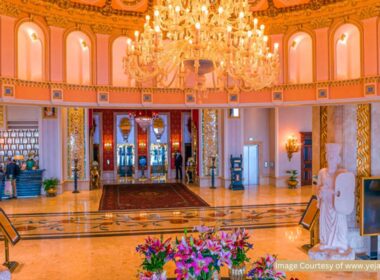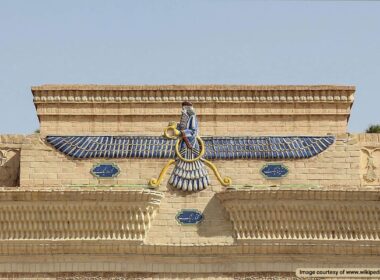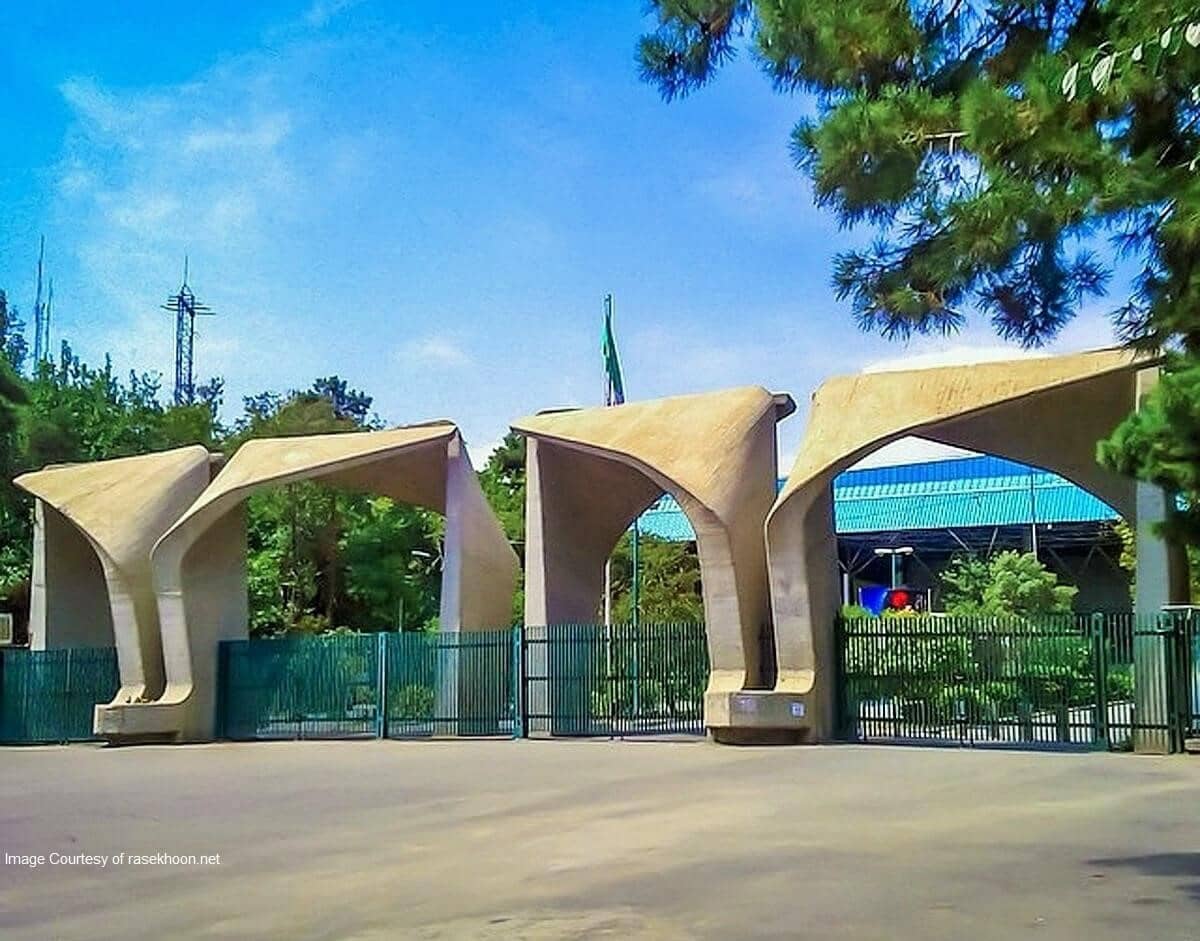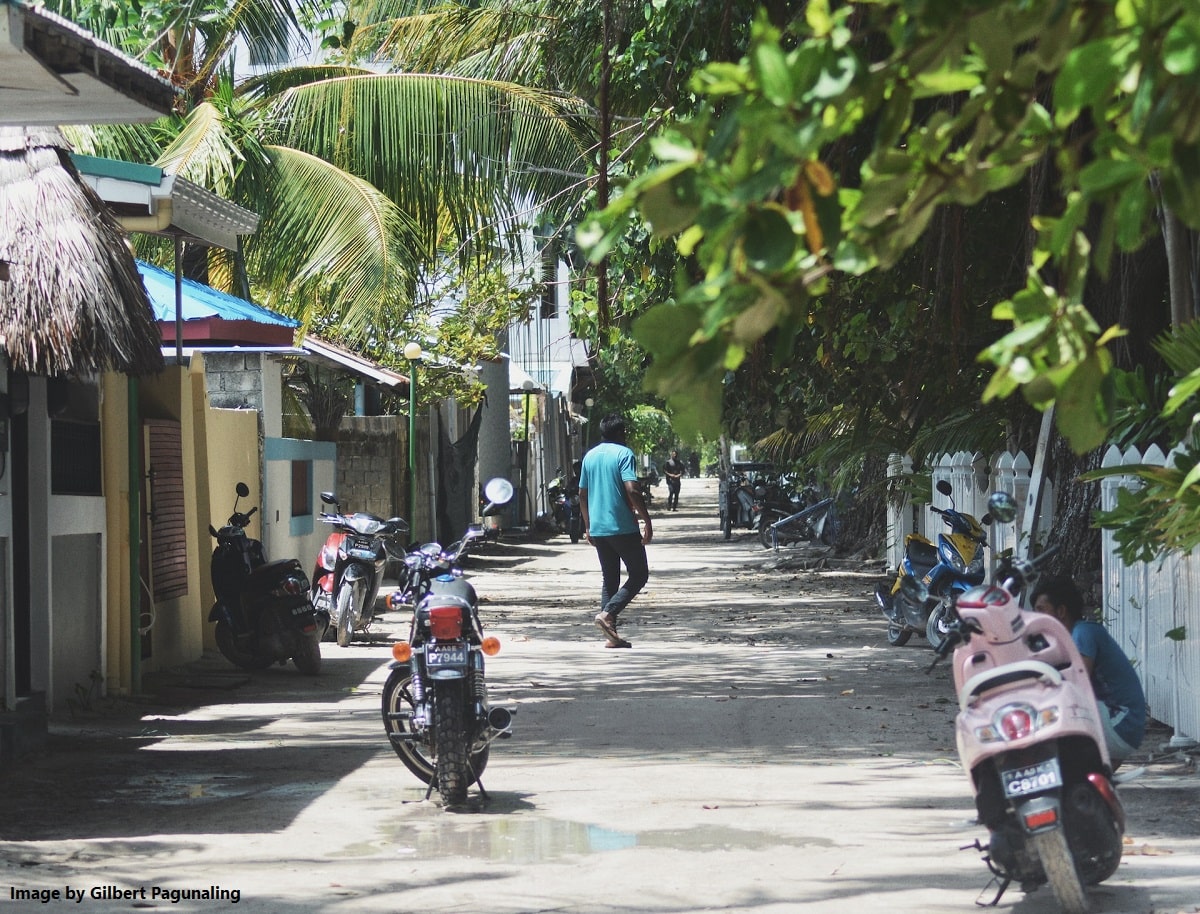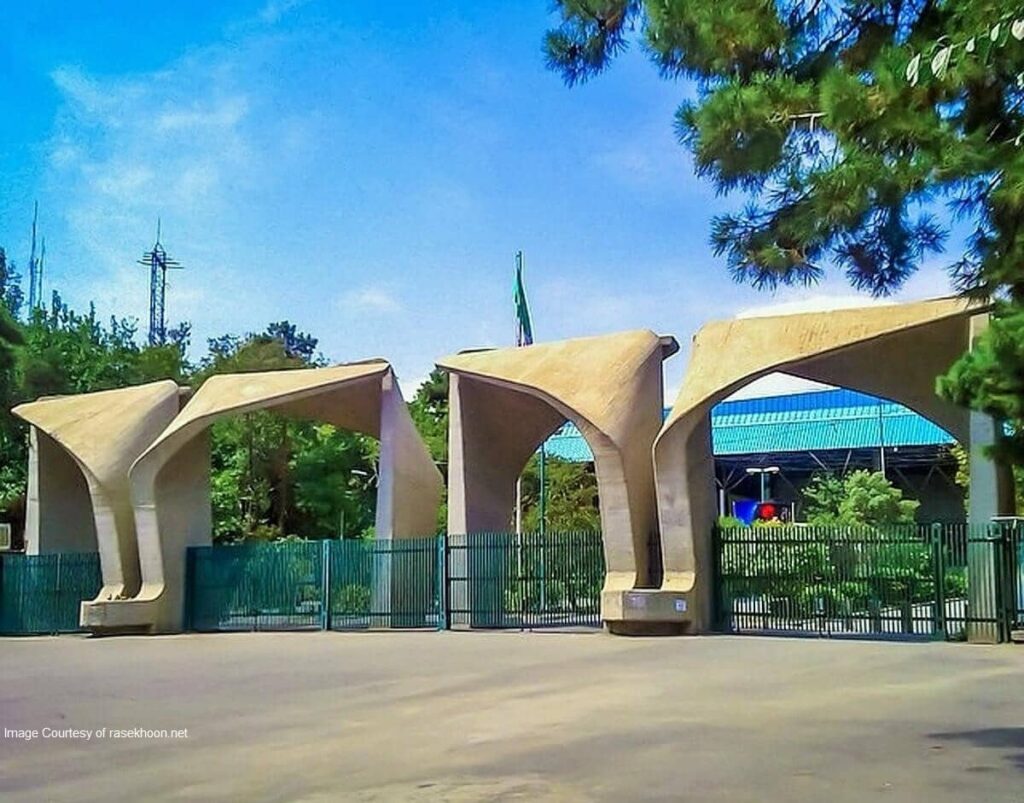
In 1925, figures such as Ismail Sang, a scholar, and politician from Sari, advised Reza Shah to build an institute in Tehran for science and technology education. Therefore, this university dates back to the first Pahlavi period with an area of 21 hectares at the time of its establishment. Currently, this university includes 25 faculties, 9 campuses, and 11 research centers, and its building has been included in the Iran National Heritage List. Tehran University is considered one of the popular Tehran tourist attractions.
The campus of the University of Tehran is limited by Enghelab Street to the south, Pour Sina Street to the north,16 Azar Street to the west, and Quds Street to the east.
The Construction of Tehran University, “Build it Extremely Well!”
Before the establishment of this university, there were schools of higher education in Iran, such as Madrese-ye Teb (School of Medical Science), Madrese-ye ‘Ulum-e Siyasi (the School of Political Sciences), and Dar al-Funun (School of Technology). The dominant teaching methods in these schools were traditional educational practices.
Ismail Sang, the representative of the people of Sari in the National Consultative Assembly, proposed the construction of a university for the first time, and some Iranian politicians supported his idea. Seyed Mohammad Tadayon, the Minister of Education, was one of the supporters. Tadayon believed: “Our country can only benefit from science to the fullest extent if we have a university and Dar-ul-Oloum, but if we continue to offer only primary and secondary education, we will never be able to benefit from higher education as other nations do.”
In this way, the proposal to establish a university was presented to Reza Shah, and he, who had dreams for the civil progress of the country, said only one sentence in response to the proposal: “Build it extremely well.”
Following Reza Shah’s approval, a delegation was sent to Europe to visit different universities in the world and create architectural models for analysis. In Nowruz of 1934, a budget of 250,000 Tomans was allocated for the construction of the Tehran University Complex. Many people were involved in the efforts to build a university, including Dr. Mahmoud Hessabi.
Choosing The Location of Tehran University
Ali-Asghar Hekmat and André Godard searched for a suitable land to build Tehran University and chose Jalaliyeh Garden which was outside Tehran at that time. On June 18, 1934, the current location of this university was approved by the National Consultative Assembly.
Jalaliyeh Garden was founded at the end of the reign of Naser al-Din Shah Qajar and in 1934 it belonged to a merchant from Tabriz. The site was purchased for 5 Rials per square meter and a total of 100,000 Tomans. Without haste, Andre Godard was commissioned to delimitate the boundaries, carry out surveys, and oversee the construction operations of the University of Tehran. By February 1934, road surface marking and planting plane tree saplings around the streets had begun.
Inauguration of Tehran University
On February 4, 1935, Reza Shah visited the campus of the School of Medicine and left a memorial plaque under the ground of this complex. First, this plaque was supposed to be golden. But due to the financial limitations at that time, it was created from a less valuable metal. The official opening ceremony was also held on March 15 at the Faculty of Law and Political Science, with a speech by Mohammad Ali Foroughi, the prime minister at that time. Foroughi stated that the inauguration of the university was an important event in the nation’s history. The members of the university’s board of directors were also present in this ceremony:
- Faculty of Medicine: Dr. Mohammad-Hossein Luqman-e Adham (Luqman-ud-Douleh) and Dr. Amir A’lam
- Faculty of Law and Political Science: Ali-Akbar Dehkhoda and Mohammad Mazaher (Sediq Hazrat)
- Faculty of Literature and Human Sciences: Isa Sedigh (Sediq A’lam) and Mirza Gholamhossein Khan Rahnama and Dr. Ali Akbar Siassi
- Faculty of Theoretical and Traditional Studies: Haj Seyed Nasrallah Taqvi and Badiul Zaman Forozanfar
- Faculty of Technological Studies: Representative of the head of the General Directorate of Industry and Dr. Mahmoud Hessabi
Tehran University started its operations with 5 faculties that were established by merging a number of educational institutes and schools. These institutions were:
- Dar al-Funun, College of Political Science, School of Medicine, School of Higher Education for Rural Agriculture and Handicrafts, Muzaffari School of Agriculture (the first school of agricultural sciences in Iran), Sanaye Mostazrafeh Art School (founded by Kamal-ol-Mulk), Architecture School of Higher Education, Law School of Higher Education and several other higher education institutes in Tehran.
University (Academy)
In the Qajar era and due to the travels of Iranian youth to Europe and especially to France, many foreign words and phrases became common in the Persian language. Farhangestan-e Farsi (the Academy of Persian Language and Literature) was established during the first Pahlavi period to find equivalents for these new words. Previously, the words “University” and “Faculty” were popular, but the Academy suggested the words “Daneshgah (University)” and “Daneshkadeh (Faculty)” instead. If not for the efforts of Farsi enthusiasts and linguistic pioneers of that time, perhaps we would still be using terms like Faculty.
Architectural Styles of Tehran University
The design of university facilities was inspired by French higher education institutes, and the designers and architects of campuses and buildings were often French. Roland Dubrulle, Maxime Siroux, Nikolai Markov, Alexander Moser, Andre Godard, and Mohsen Foroughi were the main designers and architects of the Tehran University faculties.
The architectural style of the faculties is a combination of European and Iranian architecture, which are reimagined in a modern design. In the first Pahlavi period, rapid construction progress and structural robustness were crucial factors. For this reason, the building designs were straightforward, built with modern materials such as concrete. The University of Tehran was no exception and soon enough, its functional and concrete buildings were built, making it one of the symbols of modern Tehran. This university is considered the oldest modern university in the Middle East.
The Meaning Behind Tehran University Emblem Logo
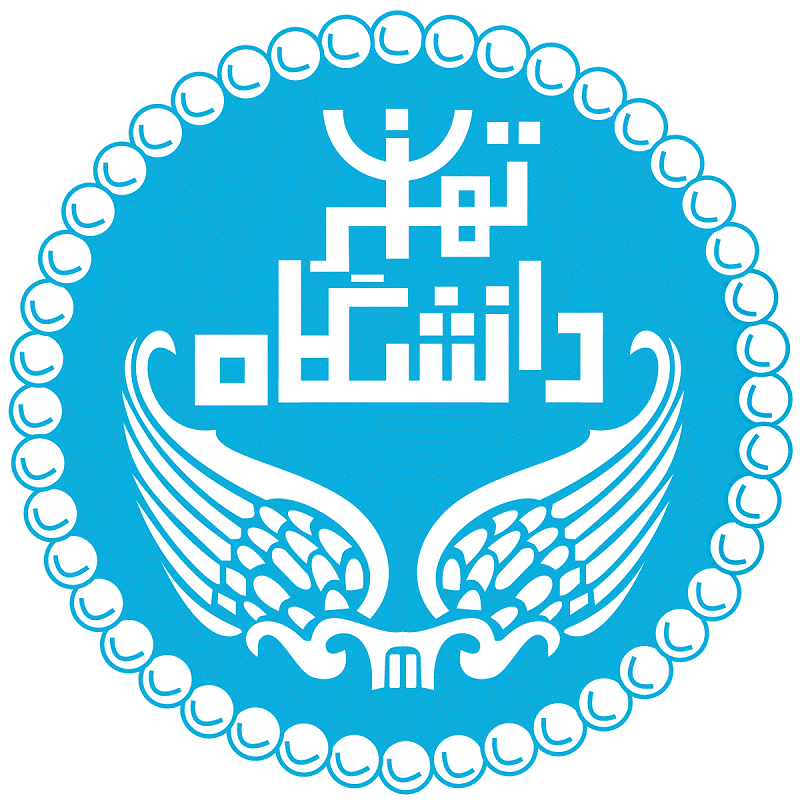
The current design that has been chosen as the official emblem of the university is a historical Iranian imagery with a long history of implementation in industrial designs. It was highly valued in ancient Persian culture.
The emblem of Tehran University was designed by Dr. Mohsen Moghadam, a professor at the University of Tehran, College of Fine Arts. This pattern is a copy of a plasterwork design that was discovered in Sassanid era historical sites. The discovered plaster plaque from the Sassanid city of Ctesiphon has the exact same design. Currently, Moghadam’s original designs and sketches are kept in the Moghaddam Museum House
The pattern of the wings is created by a combination of Ancient Persian letters from the Sassanid civilization (First Pahlavi). The layout of the two words “University” and “Tehran” follows Sassanid-era imagery, placed between the decorated wings, which may resemble eagle wings. This emblem was also used to decorate the crowns of the Sassanid period and it is called “double-wing crowns” in “Shahnameh”. The decorative embellishments made up of small circles can be traced back to the Achaemenid period. These circles were used as decorative patterns in Achaemenid coins.
The Expansion of Tehran University and Evolution of Iranian Architecture
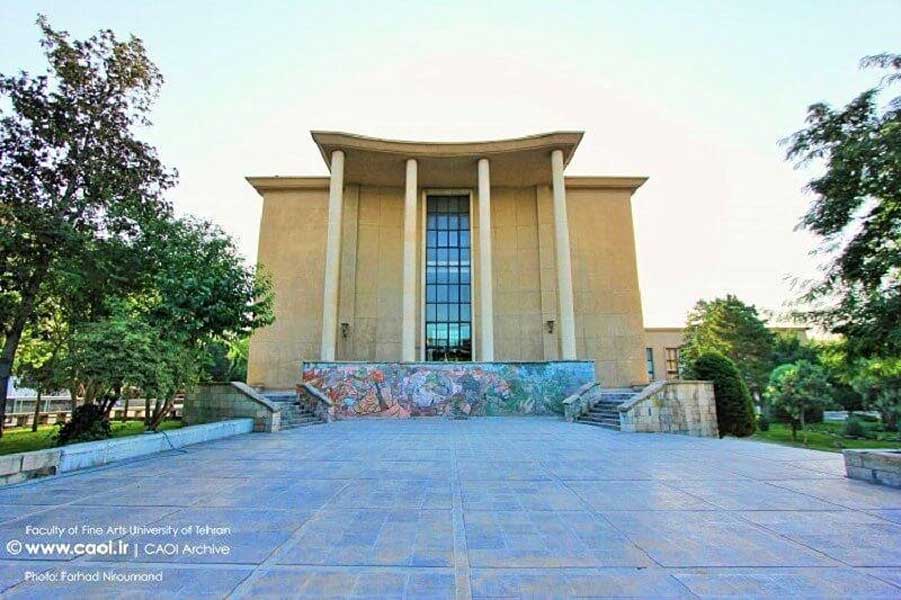
In the early 1330s (early 1950s), the academic and research structures of the university gradually assumed the American university system. For example, the Faculty of Agriculture of Tehran University was developed and expanded with the support of the University of Utah.
Other examples can be listed:
- In 1950, the University’s Institute of Administrative Services (currently the School of Management) started offering doctorate degrees with the aid of the University of Southern California.
- In 1954, the Tehran University Institute of Journalism was launched with the help of Virginia University and James Vollard.
- The Johns Hopkins University of America also launched a doctorate program in the study of cellular diseases (cytopathology) in 1961.
Other American universities such as Indiana University Bloomington, University of Illinois Urbana-Champaign, University of Colorado Boulder, The University of Alabama, and Colorado State University directly supervised the scientific and academic endeavors of this university.
The University of Tehran had two years of mandatory closure from 1989 to 1982. After the cultural revolution in the Islamic Republic of Iran, the university experienced many changes. In 198, medical science faculties were separated from this university and became independent, forming the Tehran University of Medical Sciences. This development was influential in the evolution of Tehran University’s architecture.
Tehran University’s Political Influence
Tehran University has always been the source of the biggest protest movements of Iranian students. Progressive students who felt responsible in the face of the existing issues in the country have tried to promote awareness at different times, declared solidarity with other groups of people, and sacrificed their lives for their ideals.
Central Library of Tehran University
In 1970, the new building of the central library of the University of Tehran was inaugurated, designed by Abdol-Aziz Mirza Farmanfarmaian. Today, this library contains 700 thousand books from 1800 publications collected from all over the world. Each faculty has a dedicated library. Most fields also have dedicated libraries. The architecture of the university libraries also represents a chapter in the evolution of Tehran University’s Iranian architecture.
Scientific Journals of Tehran University
Currently, 139 scientific journals are published by Tehran University, of which 97 journals have obtained scientific research qualifications from Iran’s Ministry of Science Research, and Technology. These journals are published quarterly or bi-quarterly. Literary revision and layout formatting of journals, as well as electronic and print distribution, are carried out by the publications of this university.
International Ranking of Tehran University
Excluding the University of Medical Sciences, the said university was ranked 259 in the SC Imago ranking in 2012.
According to the Shanghai Ranking (Academic Ranking of World Universities) in 2014, Tehran University was ranked 566. In 2015, it was ranked 201 to 300, and 51 to 75 in technical and engineering fields, among the top 100 universities in the world. In 2018, this university was ranked among the top 301 to 400 universities in the world.
Based on the ranking of Performance Ranking of Scientific Papers for World Universities by the National University of Taiwan in 2019, Tehran University was ranked 344 in the world, and in 2019, it obtained the following ranks in independent fields:
- Engineering Studies 71
- Agricultural sciences 161
- Natural Sciences 350-301
- Mechanical Engineering 9
- Chemical Engineering 28
- Civil Engineering 59
- Agricultural Studies 86
- Computer Science 117
- Electrical Engineering 119
- Material Science (Interdisciplinary Field)143
- Chemistry 193
- Environmental Studies 198
- Botany and Zoology 214
- Geology 255
- Mathematics 350-301
Tehran University Ranking Among Muslim Universities
According to the Islamic World Citation (ISC) ranking in 2016, this university was the third among universities in Muslim countries.
Famous Tehran University Alumni
Some prominent alumni of this university:
- Jamshid Amouzegar, the 28th Prime Minister of Mohammad Reza Pahlavi
- Abolhassan Banisadr, the first president of Iran
- Seyed Mohammad Khatami, the 5th president of Iran
- Hassan Rouhani, the 7th president of Iran
- Asghar Farhadi, the first Iranian director to win an Oscar
- Shirin Ebadi, the only Iranian winner of the Nobel Peace Prize
- Reza Davari Ardakani, a prominent contemporary Iranian philosopher and former head of the Academy of Medical Sciences
- Mohammad Ebrahim Bastani Parizi, prominent Iranian historian and writer
- Seyyed Javad Tabatabai, one of the leading political scientists in Iran
- Seyyed Musa al-Sadr, the intellectual and political leader of Lebanese Shia population and the founder of the Supreme Islamic Shia Council of Lebanon
- Nechervan Idris Barzani, the current President of Iraq’s Kurdistan region
- Lotfi Aliasker Zadeh, electrical engineer and professor emeritus of computer science at the University of California, Berkeley and the founder of fuzzy mathematics
- Bijan Namdar Zanganeh, Iran’s oil minister in the 5th to 8th, 11th and 12th Iranian cabinet
- Hossein Khonifar, Professor of Tehran University and Head of Farhangian University
Among the influential alumni of this university who are not with us anymore, we can mention the following individuals:
- Professor Jalal Uddin Homai, Abdul Azim Qarib, Badiozzaman Forouzanfar, Professor Mahmoud Hessabi, Professor Ali Akbar Dehkhoda, Dr. Mohammad Moin, Mohandes Mehdi Bazargan, Martyr Dr. Mustafa Chamran, Dr. Yadollah Sahabi, Martyr Dr. Mohammad Mofatteh, Martyr Professor Morteza Motahari, Dr. Abdolhossein Zarinkoob, Dr. Karim Saei and Dr. Ahmad Hami.
Tehran University Faculty Members and Students
Currently, the number of faculty members is about 1,500, and the administrative staff includes over 3,500 employees. This university offers students in 111 bachelor’s degree fields, 177 master’s degree fields, and 156 doctorate degree fields through an internal exam. The educational capacity of the university is about 32 thousand students. Also, 340 foreign students are currently studying at this university.
Conclusion
Tehran University includes 17 faculties, 2 higher education complexes, 4 educational research centers or institutes, 14 research institutes, and 3 information service institutes. Therefore, it is still the largest university in Iran.
Frequently Asked Questions About Tehran University
To find answers to your other questions, you can contact us through the comments section of this post. We will answer your questions as soon as possible.
In what period was Tehran University built?
This university was built during the first Pahlavi era and during the reign of Reza Shah.
What is the history of education in Iran?
There have been educational centers in Iran since ancient times. The Academy of Gondishapur from the Sasanian period is one of its famous examples. Before the establishment of the University of Tehran, higher education centers such as the Qajar Medical School were engaged in educating people in science and technology. But this university is the first modern institute of higher education in the country.
What faculties did Tehran University have in the beginning?
This university started its work with five faculties: Medical Studies, Law & Political Science, Literature & Human Sciences, Theoretical and Traditional Studies, and Technological Studies.



